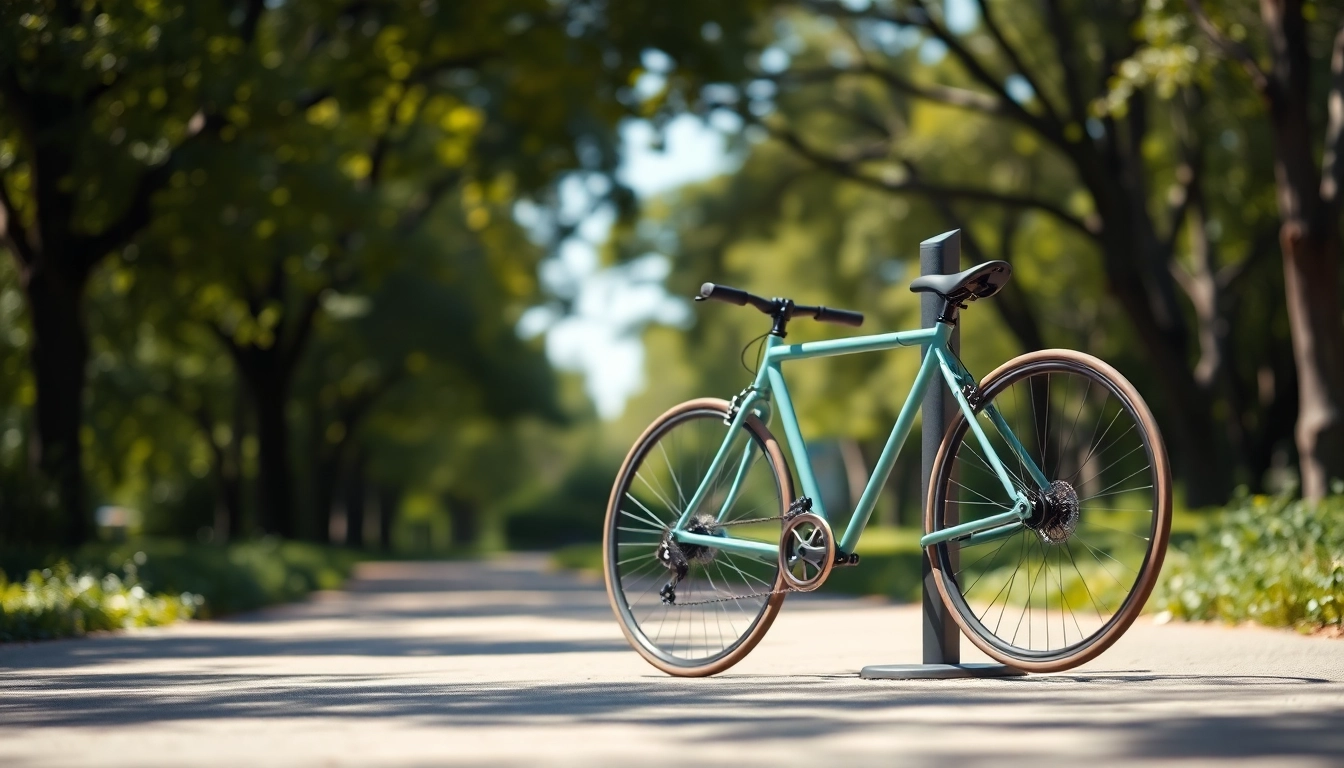Understanding Minimalist Bike Rack Designs
In recent years, the cycling community has seen a surge in the popularity of minimalist aesthetics, especially concerning bike accessories. A Minimalist bike rack exemplifies this trend, combining functionality with sleek, unobtrusive designs that align with modern sensibilities. These racks not only serve the practical purpose of holding bicycles safely but also enhance the overall aesthetic of the surroundings. Within this article, we will explore various aspects of minimalist bike racks, including their design, benefits, installation methods, and maintenance, while comparing popular models available on the market.
Key Features of Minimalist Bike Racks
The hallmark of a minimalist bike rack is its fundamental focus on simplicity and efficiency. Key features include:
- Sleek Design: Minimalist racks boast clean lines and a streamlined appearance, making them an attractive addition to any space.
- Lightweight Construction: These racks are often made from materials like aluminum or high-grade steel, which minimizes weight without sacrificing strength.
- Space Efficiency: Compact designs are effective in tight spaces. They’re designed to occupy minimal surface area, making them ideal for urban environments.
- Versatility: Many models are adaptable to different bike types, catering to everything from road bikes to mountain bikes.
- Easy Access: The design typically emphasizes ease of use, allowing cyclists to mount and dismount their bikes with minimal effort.
Types of Minimalist Bike Racks Available
When searching for the perfect minimalist bike rack, it’s important to understand the various types available:
- Wall-Mounted Racks: These occupy minimal floor space, securely holding bikes via the frame or wheel. Ideal for home use or retail environments.
- Freestanding Racks: These allow for multiple bikes to be parked without the need for wall or floor support. They are versatile for parks and community spaces.
- Portable Racks: Lightweight and easily transportable designs cater to cyclists who travel or participate in events.
- Integrated Racks: These are often built into other structures, like benches or shelters, providing a dual function while maintaining a minimalist look.
Material Choices for Durability and Style
The materials used in constructing minimalist bike racks significantly impact their durability and style. Common materials include:
- Aluminum: Known for being lightweight and resistant to corrosion, aluminum is an excellent choice for both indoor and outdoor settings.
- Steel: While heavier, steel provides robust support and can be coated for enhanced weather resistance and aesthetic appeal.
- Wood Composites: Emerging in contemporary designs, composite materials can offer a unique, inviting look while still being weather-resistant.
Benefits of a Minimalist Bike Rack
The growing interest in minimalist bike racks reflects not just aesthetic preferences but also a recognition of their practical advantages. Here are some key benefits:
Space-Saving Advantages
One of the most compelling benefits of a minimalist bike rack is its ability to save space. Urban environments often come with limited room, making it essential to utilize every square inch wisely. Minimalist bike racks are designed to occupy a fraction of the space traditional racks do, allowing for more bikes in less area. Their efficient designs mean that they can fit into tight corners, small garages, or even balconies, ensuring that bike owners have a designated area for their bikes without cluttering their living space.
Enhancing the Aesthetic of Your Space
Beyond practicality, minimalist bike racks present an opportunity to enhance both personal and communal spaces. Their sleek and unobtrusive designs can complement contemporary architecture and decor, transforming a utilitarian feature into a design statement. A well-placed Minimalist bike rack can stand as an art piece—an intersection of style and convenience that invites both admiration and function.
Cost-Effective Solutions for Bike Owners
Investing in a minimalist bike rack can be economically advantageous for riders. The initial cost of high-quality racks is offset by the potential for longevity and reduced maintenance costs. Furthermore, the price of raw materials and manufacturing has decreased significantly, making these stylish racks an affordable option for bike owners. With their ability to protect bikes from damage and corrosion, they also help to prolong the lifespan of a bike, driving down the overall cost of ownership.
Installing a Minimalist Bike Rack: Best Practices
Proper installation of a minimalist bike rack ensures optimal performance and safety. Here’s how to correctly install a minimalist bike rack:
Selecting the Right Location
Choosing the appropriate location for your bike rack is critical. Consider areas with adequate foot traffic and visibility, which can encourage usage while also contributing to bike safety. Neighborhood parks, residential complexes, and in front of retail spaces are often ideal locations. Make sure the surface is level and sturdy enough to support the installation. For wall-mounted racks, ensure that you have access to studs for secure anchoring.
Step-by-Step Installation Guide
Installation procedures will vary by model, but the general steps involve:
- Gather Tools: Ensure you have all necessary tools, including a drill, screws, and a level.
- Mark Mounting Points: Use a pencil to mark where your screws will go.
- Drill Holes: Carefully drill holes into the marked spots, ensuring to maintain a level position.
- Secure the Rack: Fit the rack using screws, ensuring it is properly anchored to the wall or the ground.
- Check Stability: Once installed, test the stability by applying gentle pressure to make sure it can withstand the weight of a bike.
Common Mistakes to Avoid
Avoid these common pitfalls during installation:
- Failing to ensure level placement, which can lead to instability.
- Not using proper anchors for the intended surface, risking damage to the rack or area.
- Ignoring the weight capacity, which can lead to collapse or bending.
Caring for Your Minimalist Bike Rack
To maintain the longevity and appearance of your minimalist bike rack, regular care is essential.
Routine Maintenance Tips
Routine care can significantly extend the life of your bike rack. Regularly check for any signs of wear and ensure all screws and anchors are tight. A quick inspection once every few months can catch potential issues before they become serious.
Cleaning and Upkeep Strategies
Keep the surface of the rack clean by wiping it down periodically with a damp cloth. For metal surfaces, using a mild detergent can help remove rust or buildup that may accumulate over time. For wooden racks, ensure the finish is intact to prevent weathering; applying sealant can enhance durability.
Ensuring Longevity and Performance
To help ensure optimal performance from your minimalist bike rack, keep it clear of debris. Regularly storing your bike properly prevents damage to both the bike and the rack. Consider placing the rack in a sheltered area, if possible, to further protect it from the elements.
Comparing Minimalist Bike Racks
With many options available, it’s wise to evaluate and compare different minimalist bike racks to find the perfect fit for your needs.
Evaluating Different Models
Start by considering the specific features of different models. Look for those that offer stability, weight capacity, and style that aligns with your preferences and environment. It’s also essential to check the ease of installation, as some models may require specialized tools or expertise.
Price Ranges and Features
Minimalist bike racks come in various price ranges, generally from budget-friendly options starting around twenty dollars to premium models that can exceed several hundred dollars. Price can often correlate with material quality and durability, so determining your budget alongside your needs will significantly narrow your options.
Customer Feedback and Reviews
Customer reviews can offer insightful perspectives on performance and reliability. Prioritize models with strong feedback regarding durability and ease of use. Checking multiple sources for reviews can give a more comprehensive outlook on how well a bike rack performs in real-world conditions.



